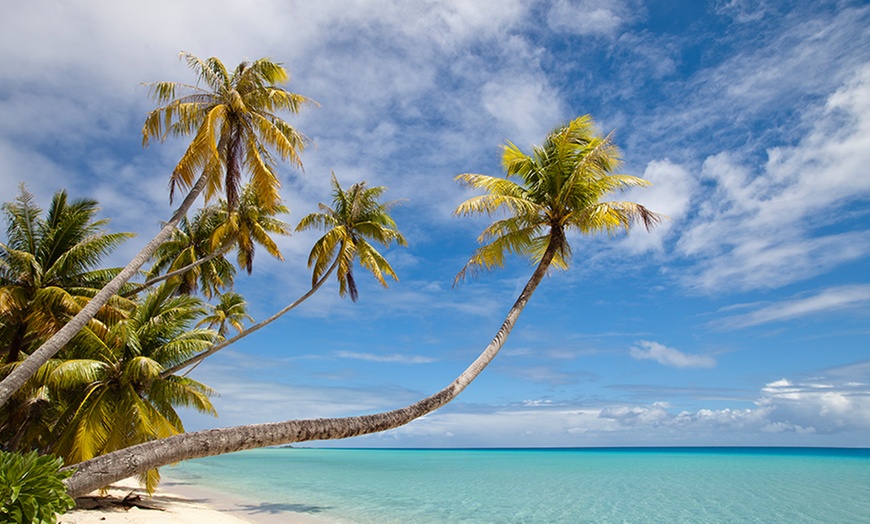Best Time to Visit Fiji: A Guide to Planning Your Perfect Trip
Fiji is an island paradise known for its crystal-clear waters, vibrant coral reefs, and rich cultural heritage. Whether you’re looking to relax on pristine beaches, snorkel through colorful reefs, or explore the local Fijian culture, understanding the best time to visit fiji is essential for making the most of your experience. With tropical weather year-round, Fiji offers something for everyone, but there are specific times when you can truly enjoy the best that these islands have to offer.
In this comprehensive guide, we’ll break down the best times to visit Fiji based on weather, events, and activities. So, if you’re wondering when the best time to visit Fiji is, keep reading to find out!
Fiji’s Climate: What to Expect
Fiji has a tropical marine climate, meaning it experiences warm weather throughout the year. The seasons are primarily divided into two: the dry season (May to October) and the wet season (November to April). Understanding this climate pattern is crucial for determining the best time to visit Fiji.
The dry season is often referred to as the winter season in Fiji, but don’t let that fool you—temperatures remain warm, averaging between 22°C (72°F) and 28°C (82°F). On the other hand, the wet season can be hot and humid, with temperatures ranging from 26°C (79°F) to 31°C (88°F). Heavy rainfall and occasional cyclones are also more common during the wet season, particularly from January to March.
Best Time to Visit Fiji for Good Weather
For most travelers, the best time to visit Fiji is during the dry season, from May to October. This period offers the most pleasant weather, with lower humidity, cooler temperatures, and minimal rainfall. If you’re planning on enjoying outdoor activities like hiking, snorkeling, or diving, the dry season provides ideal conditions for these activities.
From May to October, you’ll experience clear blue skies and refreshing breezes, making it perfect for beach vacations and island hopping. Additionally, the lower humidity means fewer mosquitoes, which is a huge bonus for travelers looking to spend time outdoors.
Peak Tourist Season
The best time to visit fiji for perfect weather also coincides with the peak tourist season, which runs from June to September. During this period, Fiji sees an influx of international travelers, particularly from Australia and New Zealand, who come to enjoy the cooler, drier conditions.
While the peak season guarantees great weather, it also means higher prices for accommodation, flights, and tours. Popular resorts can fill up quickly, so if you’re planning a trip during these months, it’s essential to book early to secure the best deals.
If you’re looking to avoid crowds but still want pleasant weather, May and October are considered shoulder months. These months offer excellent weather conditions but with fewer tourists, allowing you to experience the beauty of Fiji in a more relaxed atmosphere.
Visiting Fiji During the Wet Season
While the dry season is the most popular time to visit, the wet season (November to April) shouldn’t be entirely discounted. This period, also known as the cyclone season, does come with the risk of storms and heavy rainfall, but there are benefits to visiting Fiji during this time as well.
Firstly, the wet season is considered the off-peak period, which means significantly lower prices for flights, accommodation, and activities. If you’re traveling on a budget, this could be the best time to visit Fiji. Many resorts offer discounts, and you may find that you have more of the beaches and tourist attractions to yourself.
Despite the rainfall, the wet season is also the time when Fiji’s lush landscapes truly come to life. The islands are greener, the waterfalls are more powerful, and the flora is in full bloom. Plus, rain showers in Fiji are often short and intense, followed by hours of sunshine, so you can still enjoy outdoor activities.
However, if you plan to visit during this time, it’s essential to monitor weather forecasts for potential cyclones. Travel insurance is highly recommended to cover any disruptions caused by bad weather.
Best Time to Visit Fiji for Water Activities
Fiji is world-famous for its water activities, including snorkeling, diving, and surfing. To fully enjoy these experiences, you’ll want to choose the right time of year.
For snorkeling and diving, the best time to visit fiji is between April and October. The waters are calm and clear during these months, offering excellent visibility for exploring the vibrant coral reefs. Popular diving spots like the Great Astrolabe Reef and Rainbow Reef are at their best during this period, with plenty of marine life to observe, including sharks, manta rays, and colorful fish.
Surfing enthusiasts will find that May to October is also the prime time for catching waves in Fiji. The famous Cloudbreak surf spot near Tavarua Island draws surfers from all over the world during this season, with consistent swells and world-class waves.
If you’re looking to experience Fiji’s marine life without getting wet, boat tours and cruises are available year-round, but the dry season provides the most favorable conditions for smooth sailing.
Best Time to Experience Fijian Culture
The best time to visit Fiji for a cultural experience is during one of the island nation’s vibrant festivals. Fijians take great pride in their rich cultural heritage, and attending a local event can give you a deeper insight into the traditional customs, music, and food of the islands.
One of the most significant festivals in Fiji is the Hibiscus Festival, held annually in August in Suva. This week-long event features parades, beauty pageants, live music, and plenty of local food stalls. It’s a great way to experience the warm and welcoming spirit of the Fijian people.
In October, the Fijian Indian community celebrates Diwali, the Festival of Lights. It’s a colorful celebration that involves fireworks, traditional sweets, and family gatherings. Visiting during Diwali offers a unique cultural experience, as the islands come alive with vibrant lights and festivities.
Other cultural events include Fiji Day (October 10th), which celebrates Fiji’s independence, and the Sugar Festival in Lautoka, where locals and visitors alike come together to celebrate one of the country’s major industries.
When to Avoid Visiting Fiji
While Fiji is a year-round destination, certain times of the year may not be ideal for every traveler. The months of January through March typically experience the heaviest rainfall and have the highest risk of cyclones. If you’re planning a beach vacation or water activities, this may not be the best time to visit Fiji.
However, for those seeking discounted rates and fewer crowds, this off-peak period could still be worth considering. Just be sure to stay informed about weather conditions and plan your trip accordingly.
Conclusion
The best time to visit fiji depends largely on what you’re looking to experience. For those seeking perfect weather, outdoor adventures, and cultural events, the dry season from May to October is ideal. This period offers sunny days, calm seas, and a host of festivals to enjoy. However, if you’re looking for a more budget-friendly option and don’t mind a bit of rain, the wet season can still provide a fantastic experience, with lush landscapes and fewer tourists.
No matter when you choose to visit, Fiji’s stunning beauty, rich culture, and welcoming people ensure that your trip will be unforgettable. Whether you’re looking to relax on a beach, dive into vibrant coral reefs, or learn about Fijian culture, Fiji has something special to offer year-round.














Post Comment